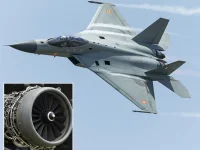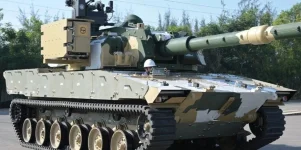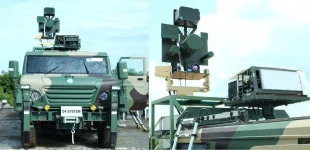- Views: 2K
- Replies: 8
India's leading defence research agency, the Defence Research and Development Organisation (DRDO), is preparing for a significant advancement in its missile technology. Plans are underway to test an updated version of the indigenous Smart Anti-Airfield Weapon (SAAW).
This next-generation weapon will feature an Electro-Optical (EO) seeker, a major upgrade allowing it to target and destroy moving objects, in addition to its original role against stationary infrastructure.
The weapon is expected to maintain its impressive 100-kilometre strike distance, significantly boosting India's tactical precision attack abilities and highlighting the nation's progress in self-reliant defence manufacturing.
The SAAW project, initially tested in 2016, was conceived to provide the Indian Air Force (IAF) with a lightweight, precision-guided bomb capable of disabling critical enemy assets such as airfield runways, fortified bunkers, and radar stations. Developed primarily by DRDO's Research Centre Imarat (RCI) in Hyderabad, with input from the IAF, the standard SAAW weighs around 125 kilograms.
It uses a combination of satellite-based signals (like GPS) and internal navigation systems (INS) to guide itself accurately. Designed for deployment from aircraft including the Jaguar, Su-30 MKI, and potentially the Hawk, it carries a warhead designed to penetrate hardened targets or crater runways, making them unusable.
Previous versions of the SAAW, successfully demonstrated in tests like the one conducted from a Hawk training jet at the Pokhran range in 2021, proved highly effective against fixed targets up to 100 kilometres away. Its successful integration with the IAF's modern Rafale fighter jets further confirmed its operational flexibility.
However, modern warfare increasingly involves mobile threats such as vehicle-mounted missile launchers or moving command posts. To address this, DRDO developed the new SAAW variant equipped with an EO seeker, specifically designed to handle these dynamic battlefield challenges.
The incorporation of an Electro-Optical seeker marks a significant technological leap for the SAAW. Unlike the original version which relied solely on pre-loaded coordinates and satellite navigation, the EO seeker uses advanced imaging technology, likely incorporating infrared or high-resolution cameras.
This allows the weapon system to visually identify and track targets in real-time during the final phase of its flight. Crucially, this enables the SAAW to lock onto and pursue moving targets, even if GPS signals are disrupted or jammed by enemy countermeasures.
This advanced EO guidance system provides the SAAW with a "fire-and-forget" capability. Once launched by the pilot, the weapon can autonomously navigate and adjust its path based on the visual or thermal signature of the designated target, greatly increasing the chances of a successful hit.
This upgrade brings the SAAW's capabilities in line with sophisticated international systems, though it remains a uniquely Indian design focused on cost-effectiveness and seamless integration with existing IAF assets.
DRDO has ensured that this enhanced SAAW retains its long range of 100 kilometres. This standoff capability is vital as it allows launch aircraft to remain at a safer distance from enemy air defence systems while releasing the weapon.
The SAAW's design includes foldable wings that allow it to glide efficiently over long distances. With the new EO seeker, this 100km range is now applicable to both fixed infrastructure and mobile units, making the SAAW a highly adaptable weapon for the IAF and potentially for future use by the Indian Navy from its aircraft carriers.
The ability to effectively engage moving targets significantly broadens the SAAW's potential uses. While still capable of its primary mission of disabling airfields – a critical function in potential conflicts – it can now be employed against mobile threats like surface-to-air missile launchers, artillery systems, enemy convoys, or command vehicles. This added versatility is particularly valuable in complex operational areas, such as mountainous border regions where mobile military assets are frequently deployed.
Current preparations by DRDO suggest that the EO-equipped SAAW is advancing towards operational deployment. Reports indicate that crucial flight tests are anticipated around mid-2025, potentially taking place at established test ranges like Chandipur in Odisha or Pokhran in Rajasthan.
These trials will likely involve releasing the weapon from key IAF aircraft, such as the Su-30 MKI and Rafale. The focus will be on thoroughly evaluating the EO seeker's performance under diverse conditions, including day/night operations, challenging weather, and against realistic simulations of moving targets, to confirm its accuracy and dependability.
The integration of the new seeker builds upon DRDO's previous successes with the SAAW program. It is understood that engineers have refined the weapon's internal electronics and software to incorporate the EO system without significantly altering its weight or reducing its range. Ground-based testing of the seeker's imaging and tracking functions is likely complete, setting the stage for these critical airborne trials.
Continuous collaboration between DRDO and the IAF ensures the weapon meets the practical needs of the armed forces, potentially leading to its swift introduction into service following successful testing.






